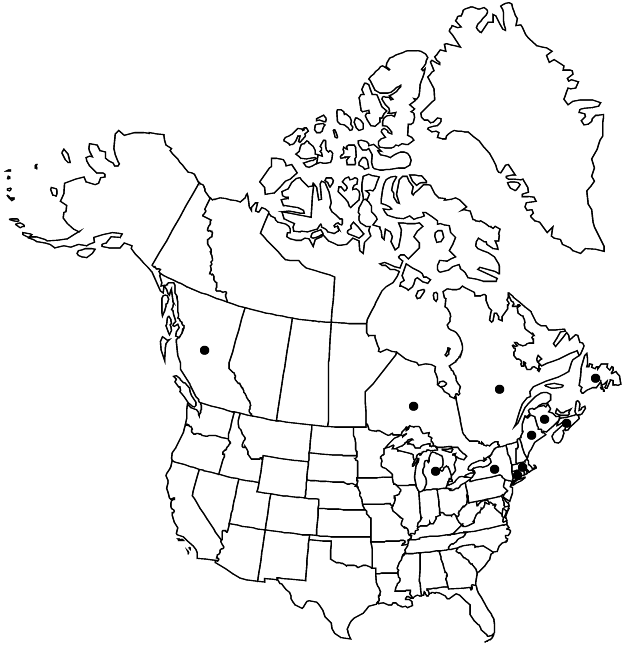Difference between revisions of "Primula veris"
Sp. Pl. 1: 142. 1753 ,.
FNA>Volume Importer |
imported>Volume Importer |
||
| (One intermediate revision by the same user not shown) | |||
| Line 7: | Line 7: | ||
}} | }} | ||
|common_names=Cowslip primrose | |common_names=Cowslip primrose | ||
| + | |special_status={{Treatment/ID/Special_status | ||
| + | |code=I | ||
| + | |label=Introduced | ||
| + | }} | ||
|basionyms= | |basionyms= | ||
|synonyms={{Treatment/ID/Synonym | |synonyms={{Treatment/ID/Synonym | ||
| Line 27: | Line 31: | ||
|elevation=0-1000 m | |elevation=0-1000 m | ||
|distribution=B.C.;N.B.;Nfld. and Labr. (Nfld.);N.S.;Ont.;Que.;Conn.;Maine;Mass.;Mich.;N.Y.;Europe. | |distribution=B.C.;N.B.;Nfld. and Labr. (Nfld.);N.S.;Ont.;Que.;Conn.;Maine;Mass.;Mich.;N.Y.;Europe. | ||
| + | |introduced=true | ||
|discussion=<p><i>Primula veris</i> shows exceptional morphological variation in Europe, with multiple specific and infraspecific names. It is a popular garden plant both here and in Europe; horticultural varieties abound and are almost certainly represented among the records from North America.</p> | |discussion=<p><i>Primula veris</i> shows exceptional morphological variation in Europe, with multiple specific and infraspecific names. It is a popular garden plant both here and in Europe; horticultural varieties abound and are almost certainly represented among the records from North America.</p> | ||
|tables= | |tables= | ||
| Line 50: | Line 55: | ||
|publication title=Sp. Pl. | |publication title=Sp. Pl. | ||
|publication year= | |publication year= | ||
| − | |special status= | + | |special status=Introduced |
| − | |source xml=https:// | + | |source xml=https://bitbucket.org/aafc-mbb/fna-data-curation/src/2e0870ddd59836b60bcf96646a41e87ea5a5943a/coarse_grained_fna_xml/V8/V8_605.xml |
|genus=Primula | |genus=Primula | ||
|species=Primula veris | |species=Primula veris | ||
Latest revision as of 22:44, 5 November 2020
Plants 8–30 cm, herbaceous; rhizomes thick, short; rosettes sometimes clumped, vegetative parts efarinose but often pubescent. Leaves not aromatic, indistinctly or abruptly petiolate; petiole winged; blade with deep reticulate veins abaxially, ovate to ovate-oblong, 5–20 × 2–6 cm, thin, membranaceous in age, margins coarsely toothed, apex acute to obtuse, surfaces pubescent, hairs simple. Inflorescences 5–16-flowered; involucral bracts plane, unequal. Pedicels erect to drooping, moderately thick, 3–20 mm, length 1–3 times bracts, flexuous. Flowers heterostylous; calyx pale green, broadly campanulate, 0.8–2 cm; corolla yellow, with orange spots at base of lobes, tube 8–20 mm, length to 1 times calyx, eglandular, limb 8–28 mm diam., lobes 8–14 mm, apex slightly emarginate to distinctly notched. Capsules ovoid, length to 1 times calyx. Seeds without flanged edges, minutely vesiculate. 2n = 22 (Europe).
Phenology: Flowering spring.
Habitat: Meadows and pastures, persisting around old gardens and homesteads, apparently substantially spreading and naturalized
Elevation: 0-1000 m
Distribution

Introduced; B.C., N.B., Nfld. and Labr. (Nfld.), N.S., Ont., Que., Conn., Maine, Mass., Mich., N.Y., Europe.
Discussion
Primula veris shows exceptional morphological variation in Europe, with multiple specific and infraspecific names. It is a popular garden plant both here and in Europe; horticultural varieties abound and are almost certainly represented among the records from North America.
Selected References
None.